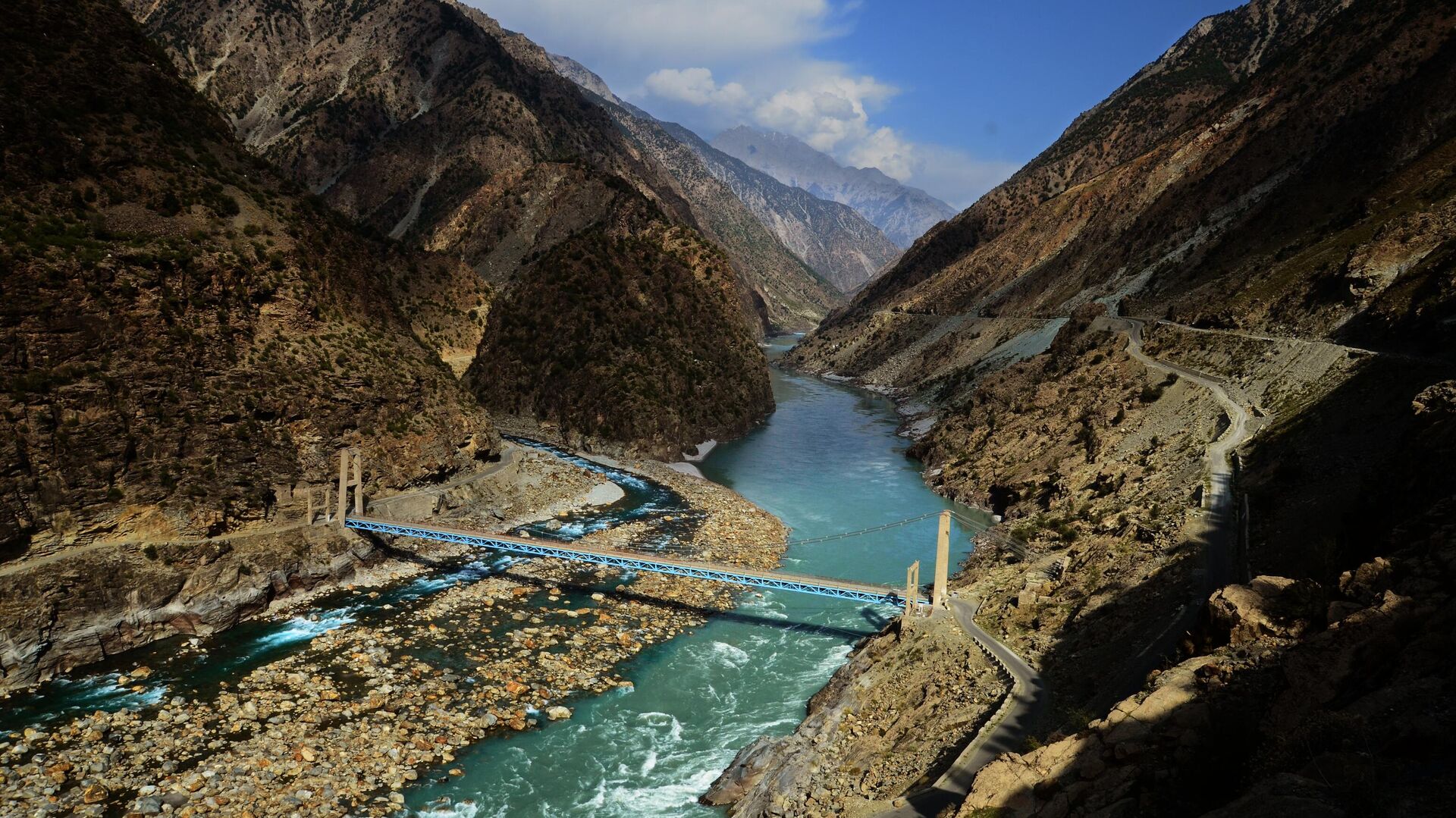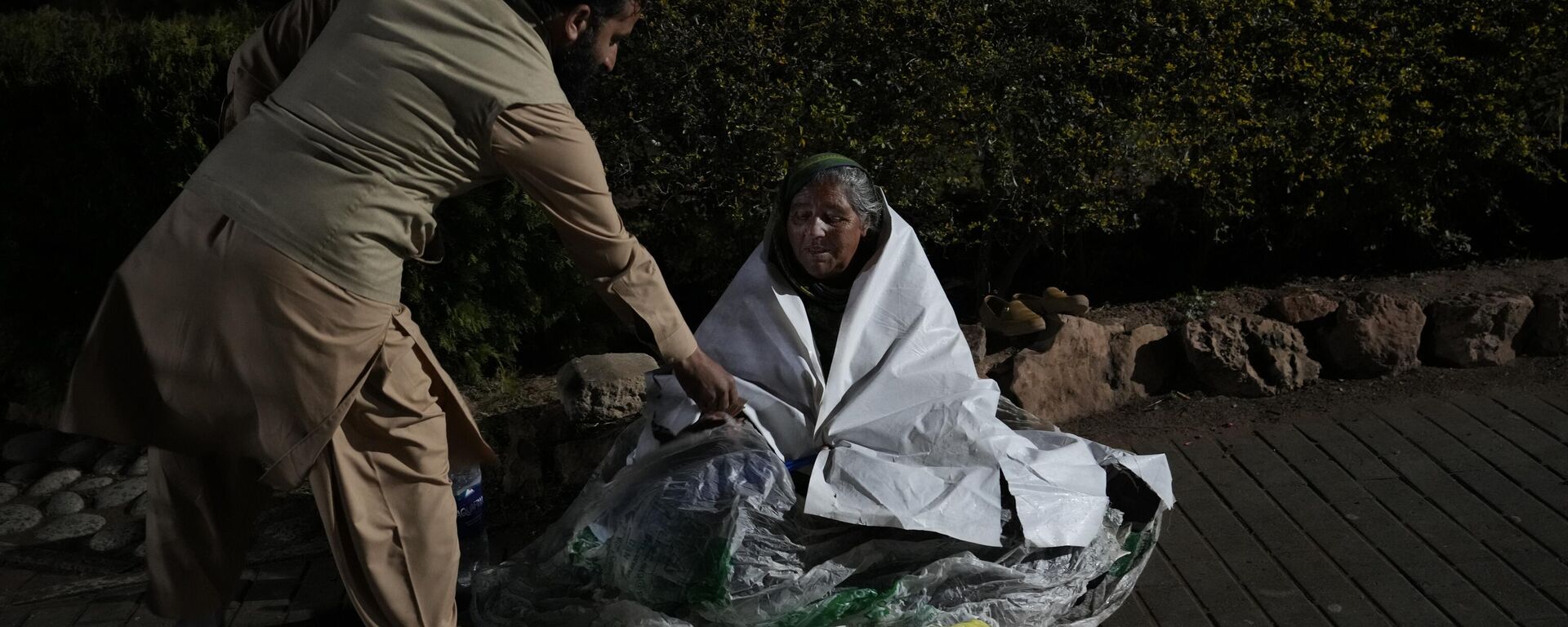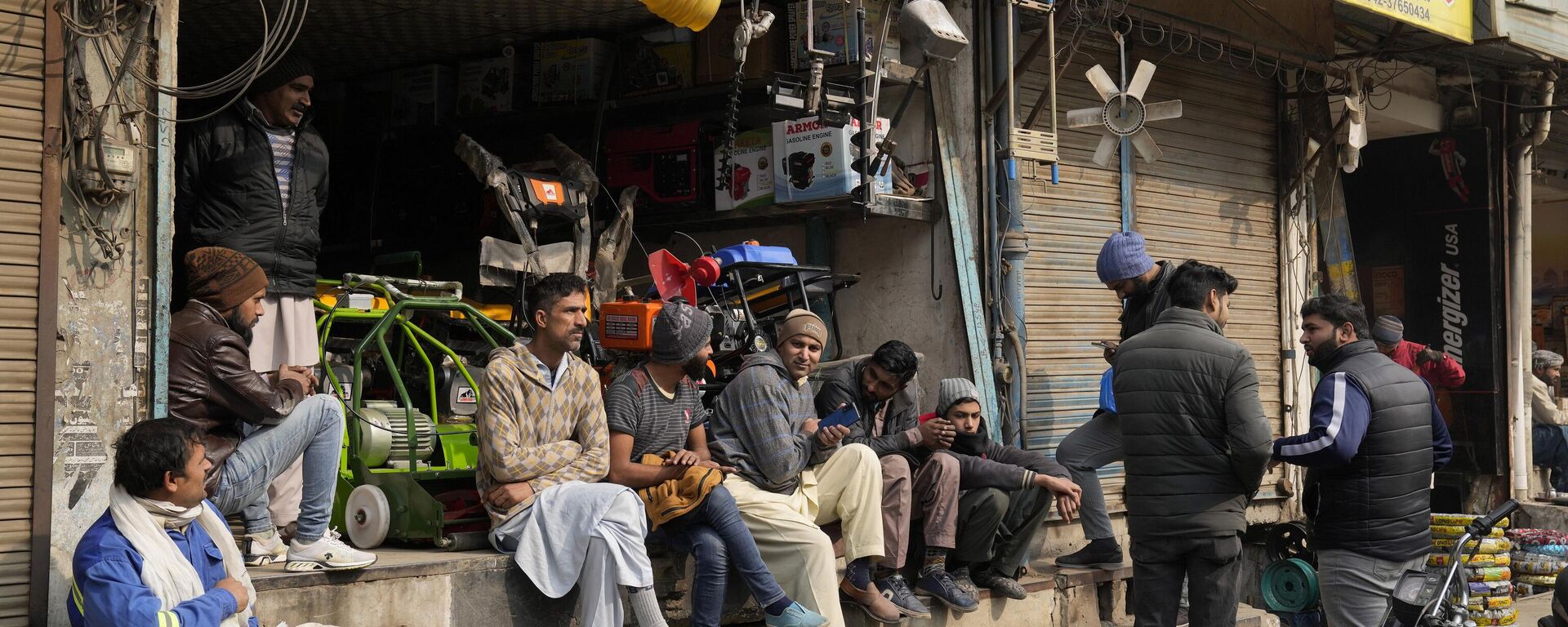https://sputniknews.in/20230225/pakistans-grand-dasu-hydropower-project-witnesses-historic-moment-1001326.html
Pakistan's Grand Dasu Hydropower Project Witnesses Historic Moment
Pakistan's Grand Dasu Hydropower Project Witnesses Historic Moment
Sputnik India
The Dasu Hydropower dam is located on the Indus River in Kohistan district, Khyber Pakhtunkhwa province. The project is set to generate the greatest annual... 25.02.2023, Sputnik India
2023-02-25T21:22+0530
2023-02-25T21:22+0530
2023-02-25T21:22+0530
pakistan
sputnik exclusives
environment
indus river
punjab
energy crisis
energy transition
https://cdn1.img.sputniknews.in/img/07e7/02/19/1004086_0:154:3093:1893_1920x0_80_0_0_7f9ec4f93366d49219612c8014d7ad37.jpg
A landmark moment took place at the Dasu Hydropower dam last week when Pakistan's largest river, the Indus, was successfully diverted from its course. In a country that is susceptible to severe flooding this achievement is no small feat.Who is Behind the Project?Although it is a project of Pakistan's Water and Power Development Authority (WAPDA) and is a major part of the company's Water Vision 2025, the dam is financed by a number of funders.The World Bank provided $588 million, local commercial financing from a consortium of local banks gave Rs 144 billion ($558 million), and foreign commercial financing from Credit Suisse Bank contributed another $350 million. WAPDA has injected its equity equivalent to 15% of the project base cost.Overall it will reportedly cost an estimated $4.278 billion to construct the dam. The main civil works, undertaken by China Gezhouba Group Company Limited, started in early 2018. Meanwhile, work on the water diversion tunnel was inaugurated in December 2018.Pakistan is facing a serious water crisis due to the increasing population and declining water resources. Although huge dams like Mangla have helped in providing water to the population and crops, since the construction of the Mangla Dam decades ago, the country's population has been rising and is estimated to go up to 280 million by 2025. With the increase in the population, not only demand for water for food crops will increase but also requirements for drinking water and electricity will also rise.Hence, WAPDA's Water Vision 2025 aims to solve this water and energy crisis. Dasu Hydropower is a big step toward achieving this goal. At the moment, stage 1 of the dam is under construction and is likely to start generating electricity in 2026. It is said that the dam will have an annual energy generation of 12 billion units. The 2160 MW stage 2, when finished, will provide a further 9 billion units to the national grid.On completion of both stages, Dasu is set to become the project with the greatest annual energy generation in Pakistan at some 21 billion units per annum on average.The Mighty Indus and Its DangersRecently, the River Indus was successfully diverted from its course following the completion of one of the two diversion tunnels of the Dasu dam. Instead of its natural course, the river is now flowing through a 1.33-kilometer-long diversion tunnel which is 20 meters wide and 23 meters high.General Manager of Dasu Hydropower Project, representatives of the contractors and the consultants, along with a number of engineers and workers witnessed the grand moment of River Indus diversion. WAPDA Chairman Lt Gen Sajjad Ghani (Retd), congratulated the project management teams on their achievement.For Pakistan, diverting the Indus River is of utmost importance because although the river is the lifeline of the country’s economy, it can cause huge losses when it floods. The great trans-Himalayan river of South Asia is one of the longest rivers in the world at 2,000 miles (3,200 km).The land around the Indus River is very fertile and irrigation from its waters has provided the basis for successful agriculture for centuries. Modern irrigation engineering work started about 1850 and during the period of British administration, large canal systems were constructed.In many cases, old canals and inundation channels in the Sindh and Punjab regions were improved and modernized. Thus, the greatest system of canal irrigation in the world was created and although embankments have been constructed along the Indus River to prevent flooding, occasionally these give way and floods destroy large areas, demolishing crops and livestock in the country.The floods of 2022 had a devastating effect on Pakistan's economy as two-thirds of the country was underwater. More than 30 million people were displaced from their homes, over one thousand people died and thousands of livestock perished.Hence, it is vital for Pakistan to have a good network of dams such as Dasu with its diversion tunnels for controlling the river.Joint Ventures and Socio-Economic ServicesThe diversion system of the Dasu Hydropower Project consists of two tunnels - tunnel A and B. Of these, tunnel B is complete, which has the discharge capacity enough to divert water of River Indus during the lean flow season.Meanwhile, the 1.5 km long tunnel A, with 20-m width and 23-m height, is projected to be ready before the summer of this year, in order to control increased water flows during the high flows of the monsoon season.For the completion of the project, WAPDA signed a first Rs52.5 billion ($200,000) contract with a Chinese joint-venture, regarding electro-mechanical works. This contract includes design, supply and installation of the first stage's six 360 MW turbines, along with their generators, and transformers.According to the World Bank, the overall project development objective is to clear the way to the expansion of electricity supply of hydro-power in Pakistan. It is also projected to improve access to socio-economic services for local communities in the project area and build WAPDA’s capacity to launch future hydropower projects in the country.
https://sputniknews.in/20230224/pakistan-welcomes-russias-interest-in-its-mega-hydro-power-projects-988074.html
https://sputniknews.in/20230221/imf-friendly-countries-cannot-solve-pakistans-problems-defense-minister-948781.html
https://sputniknews.in/20230123/blackout-hits-major-cities-in-pakistan-after-grid-breaks-down-600530.html
https://sputniknews.in/20230217/pakistans-ravaged-economy-the-country-has-had-a-stroke-919802.html
pakistan
indus river
punjab
Sputnik India
feedback.hindi@sputniknews.com
+74956456601
MIA „Rossiya Segodnya“
2023
Aneela Rashid
https://cdn1.img.sputniknews.in/img/07e6/0c/0d/74548_0:0:485:484_100x100_80_0_0_821526e967ae85d041e2d30ee34fa1de.jpg
Aneela Rashid
https://cdn1.img.sputniknews.in/img/07e6/0c/0d/74548_0:0:485:484_100x100_80_0_0_821526e967ae85d041e2d30ee34fa1de.jpg
News
en_IN
Sputnik India
feedback.hindi@sputniknews.com
+74956456601
MIA „Rossiya Segodnya“
Sputnik India
feedback.hindi@sputniknews.com
+74956456601
MIA „Rossiya Segodnya“
Aneela Rashid
https://cdn1.img.sputniknews.in/img/07e6/0c/0d/74548_0:0:485:484_100x100_80_0_0_821526e967ae85d041e2d30ee34fa1de.jpg
pakistan, environment, indus river, punjab, energy crisis, energy transition
pakistan, environment, indus river, punjab, energy crisis, energy transition
Pakistan's Grand Dasu Hydropower Project Witnesses Historic Moment
The Dasu Hydropower dam is located on the Indus River in Kohistan district, Khyber Pakhtunkhwa province. The project is set to generate the greatest annual amount of energy in Pakistan and help prevent future floods that are known to devastate the country's economy.
A landmark moment took place at the Dasu Hydropower dam last week when Pakistan's largest river, the Indus, was successfully diverted from its course. In a country that is
susceptible to severe flooding this achievement is no small feat.
Who is Behind the Project?
Although it is a project of Pakistan's Water and Power Development Authority (WAPDA) and is a major part of the company's
Water Vision 2025, the dam is financed by a number of funders.
The World Bank provided $588 million, local commercial financing from a consortium of local banks gave Rs 144 billion ($558 million), and foreign commercial financing from Credit Suisse Bank contributed another $350 million. WAPDA has injected its equity equivalent to 15% of the project base cost.
Overall it will reportedly cost an estimated $4.278 billion to construct the dam. The main civil works, undertaken by China Gezhouba Group Company Limited, started in early 2018. Meanwhile, work on the water diversion tunnel was inaugurated in December 2018.
Pakistan is facing a serious water crisis due to the increasing population and declining water resources. Although huge dams like Mangla have helped in providing water to the population and crops, since the construction of the Mangla Dam decades ago, the country's population has been rising and is estimated to go up to 280 million by 2025. With the increase in the population, not only demand for water for food crops will increase but also requirements for drinking water and electricity will also rise.
Hence, WAPDA's Water Vision 2025 aims to solve this water and energy crisis. Dasu Hydropower is a big step toward achieving this goal. At the moment, stage 1 of the dam is under construction and is likely to start generating electricity in 2026. It is said that the dam will have an annual energy generation of 12 billion units. The 2160 MW stage 2, when finished, will provide a further 9 billion units to the national grid.
On completion of both stages, Dasu is set to become the project with the greatest annual energy generation in Pakistan at some 21 billion units per annum on average.
The Mighty Indus and Its Dangers
Recently, the River Indus was successfully diverted from its course following the completion of one of the two diversion tunnels of the Dasu dam. Instead of its natural course, the river is now flowing through a 1.33-kilometer-long diversion tunnel which is 20 meters wide and 23 meters high.
General Manager of Dasu Hydropower Project, representatives of the contractors and the consultants, along with a number of engineers and workers witnessed the grand moment of River Indus diversion. WAPDA Chairman Lt Gen Sajjad Ghani (Retd), congratulated the project management teams on their achievement.
For Pakistan, diverting the Indus River is of utmost importance because although the river is the lifeline of the country’s economy, it can cause huge losses when it floods. The great trans-Himalayan river of South Asia is one of the longest rivers in the world at 2,000 miles (3,200 km).
The river’s annual flow is about 58 cubic miles (241 cubic km), twice that of the Nile River and three times that of the Tigris and Euphrates rivers combined. But Indus becomes much larger when it reaches Punjab because other rivers of the province combine into it and during the flood season (July to September) it becomes several miles wide.
The land around the Indus River is very fertile and irrigation from its waters has provided the basis for successful agriculture for centuries. Modern irrigation engineering work started about 1850 and during the period of British administration, large canal systems were constructed.
In many cases, old canals and inundation channels in the Sindh and Punjab regions were improved and modernized. Thus, the greatest system of canal irrigation in the world was created and although embankments have been constructed along the Indus River to prevent flooding, occasionally these give way and floods destroy large areas, demolishing crops and livestock in the country.
The floods of 2022 had a devastating effect on Pakistan's economy as two-thirds of the country was underwater. More than 30 million people were displaced from their homes, over one thousand people died and thousands of livestock perished.
Hence, it is vital for Pakistan to have a good network of dams such as Dasu with its diversion tunnels for controlling the river.
Joint Ventures and Socio-Economic Services
The diversion system of the Dasu Hydropower Project consists of two tunnels - tunnel A and B. Of these, tunnel B is complete, which has the discharge capacity enough to divert water of River Indus during the lean flow season.
Meanwhile, the 1.5 km long tunnel A, with 20-m width and 23-m height, is projected to be ready before the summer of this year, in order to control increased water flows during the high flows of the monsoon season.
For the completion of the project, WAPDA signed a first Rs52.5 billion ($200,000) contract with a Chinese joint-venture, regarding electro-mechanical works. This contract includes design, supply and installation of the first stage's six 360 MW turbines, along with their generators, and transformers.
Furthermore, WAPDA is reportedly spending Rs17.34 billion ($66,000) on the schemes related to the resettlement, environmental management and social development in the project area. More than 3,700 jobs have so far been created and they are set to further increase to 8,000 in the coming months.
According to the World Bank, the overall project development objective is to clear the way to the expansion of electricity supply of hydro-power in Pakistan. It is also projected to improve access to socio-economic services for local communities in the project area and build WAPDA’s capacity to launch future hydropower projects in the country.






